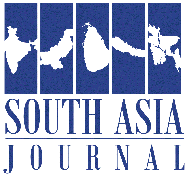
Four years since the military coup of February 2021, Myanmar has not collapsed into anarchy. On the contrary, it is undergoing one of the most ambitious – and painful – political transformations in its modern history. Across ethnic territories and revolutionary strongholds, communities are constructing new political institutions rooted in decades of struggle and shaped by a collective rejection of militarised centralism.
Earlier this year, I joined ASEAN Parliamentarians for Human Rights (APHR) on fact-finding missions to Chiang Mai and Mae Sot along the Thai-Myanmar border. There, I met displaced teachers, medics, lawmakers, ethnic leaders, and activists. Far from being passive victims, they are at the heart of a movement not simply to restore democracy, but to reimagine the state itself. Their vision is bold: a genuinely inclusive federal union, forged from the ground up.
At the heart of this movement is the National Unity Consultative Council (NUCC), established under the Federal Democratic Charter to articulate a vision for a new constitution and federal system. It brings together a broad coalition of actors, including the National Unity Government (NUG), the interim legislative body (Committee Representing the Pyidaungsu Hluttaw or CRPH), civil society groups, the Civil Disobedience Movement, ethnic political parties, and Ethnic Armed Organisations.
In our conversations, one phrase echoed repeatedly: federalism from below. This is not just a call for decentralisation – it is a demand for a political order where power is shared, diversity is protected, and communities have real agency over their future.
There is still time for ASEAN to shift course.
Myanmar’s federalist struggle is not new. Since independence, ethnic minorities have consistently demanded a system that reflects the country’s rich mosaic of languages, religions, and cultures. Yet successive military regimes – from 1962 through 1989, again from 1990 to 2010, and since the 2021 coup – have crushed these demands under the heel of centralised rule. Federalism was not just sidelined; it was treated as a threat to national unity.
Today, bottom-up federalism is no longer a concept – it is being practiced. In Karenni State, for instance, the Karenni State Consultative Council and its Interim Executive Council have expanded administrative control from seven to sixteen townships. These local institutions are delivering essential services from health, education to community justice. At the national level, the NUCC is advancing a unifying framework through the Alternative Federal Transitional Arrangement (AFTA) – a political blueprint for federal governance. With a draft expected by July 2025, this process reflects unprecedented multi-ethnic collaboration. However, serious challenges remain. While the proposal from the NUG’s Ministry of Federal Union Affairs has faced constructive feedback from ethnic partners for insufficiently institutionalising power-sharing and failing to robustly protect minority rights.
This amounts to a painstaking attempt to build a new social contract – one shaped by the scars of conflict and the lessons of failed ceasefires. It centres justice, coexistence, and accountability – not elite deals or military co-optation.
But this project of federal state-building is constantly under siege. Airstrikes, displacement, and junta atrocities are not just acts of war – they are attempts to destroy the very future being envisioned in defiance. Unlike the past, this movement is not waiting for the ceasefire to begin building governance – it is doing so in the heart of conflict.
In stark contrast, the responses from ASEAN member states have been fragmented. While Malaysia and Indonesia have taken important steps to engage with the democratic opposition and ethnic organisations. Thailand clings to strategic ambiguity, the Philippines has called for a new diplomatic framework, and Cambodia has entertained the junta’s plans sham elections. The Five-Point Consensus has failed to be fulfilled, while the bloc continues to treat the junta as a legitimate stakeholder. At the heart of the problem is a fundamental gap in ASEAN’s Charter: the absence of any mechanism to address unconstitutional changes of government.

There is still time to shift course. The recent adoption of the ASEAN Leaders’ Statement on an Extended and Expanded Ceasefire (May 2025) is a welcome step. Malaysia should build on this by initiating a civilian-led border observation mission, in coordination with humanitarian actors, to verify ceasefire compliance, protect civilians, and ensure safe and timely aid delivery. This would transform ASEAN’s words into tangible protection.
With six months remaining as ASEAN chair, Malaysia could propose and further convene a high-level international conference on Myanmar’s democratisation, co-hosted with ASEAN and the United Nations. Such a summit would mark the first formal platform to chart a roadmap toward peace, federalism, and democratic restoration. It would include ASEAN member states, the NUG, ethnic armed organisations, civil society, and international partners.
Myanmar’s future is not being scripted by generals or staged elections. It is being authored in federal charters, nurtured in liberated townships, and kept alive in classrooms powered by courage and conviction. The question ASEAN must face is not what to do, but whether it is ready to stand with those who dare to imagine, and build, a new Myanmar.
The article appeared in the lowyinstitute
